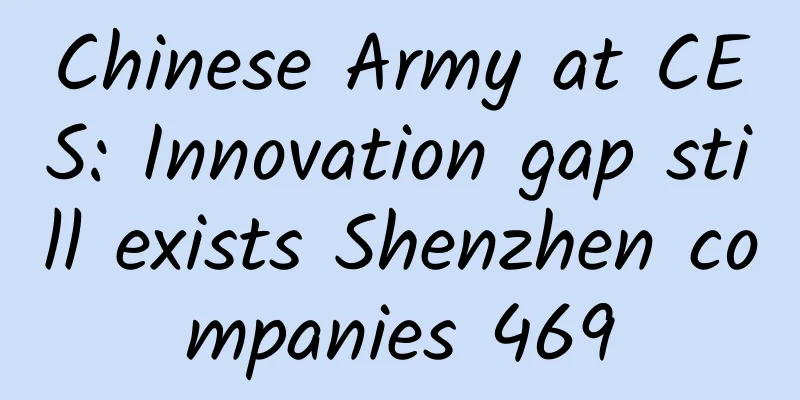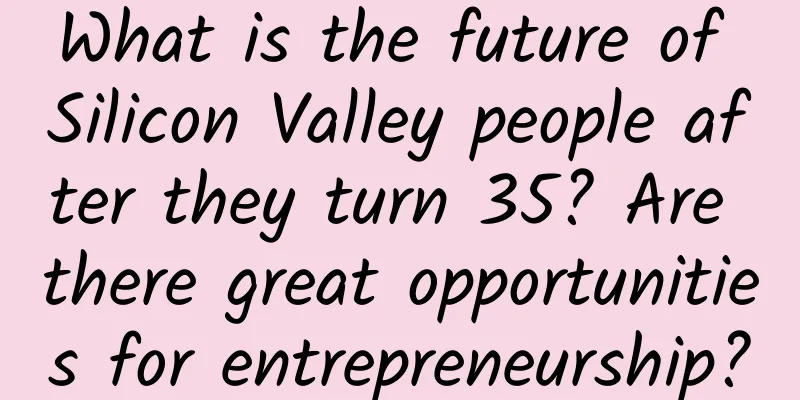Chinese Army at CES: Innovation gap still exists Shenzhen companies 469

|
"Now if you don't go to the US to attend CES, you'll be embarrassed to say hello in the circle." Cao Jin, executive vice president of YY, recently posted the above sentence on his WeChat Moments. Although it seems that the "Internet circle" where YY is located has little to do with CES (Consumer Electronics Show), it cannot be denied that more and more Chinese companies are beginning to regard this largest electronics show in the United States as an excellent opportunity to enhance their brand recognition in the US market. According to the online exhibitor list provided by CES, more than 25% of the exhibitors at this year's conference are from China. Some American media even analyzed this phenomenon, "Why Chinese tech giants could surprise you at CES2015?" The other party commented that China is not only satisfied with being an electronic processing factory, but has also been laying the foundation for becoming an innovative technology power. But in fact, judging from the situation in the past few days, the reporter found that American, Japanese and Korean manufacturers still occupy the center of this technological feast, and our gap is still huge. Chinese Army at CES A set of data shows the appeal of CES to the Chinese community. According to incomplete statistics, in 2010, CES had more than 2,500 companies participating, with more than 20,000 new products on display, of which more than 300 were Chinese companies, including Lenovo, Huawei, Edifier, Hisense, TCL, Haier, Asus, Hanwang, etc. Four years later, at the 47th CES, more than 1,200 Chinese companies participated. This year, the number reached a historical high. As China develops, its technology industry is also changing. Technology is developing rapidly, especially with the advent of the mobile era, smartphones, smartbooks and tablets have become an indispensable part of life. Chinese technology companies have seen opportunities and are beginning to try to seize them. Someone did a simple search on the list of exhibitors and found that there were 469 companies with "shenzhen" in their names. Among them were old faces like Lenovo, Huawei, and ZTE, as well as newcomers like Ant Vision and EHang; traditional home appliance manufacturers like Hisense, TCL, and Haier, as well as smart home newcomers like Orvibo and Broadlink. That’s not all. Many Chinese companies have also bought a lot of eye-catching advertising space. For example, Hisense took up a prominent billboard outside the main building of the Las Vegas Convention Center to promote its 100-inch TV. "We also have some new products, such as charging technology and various smart plugs." Hu Zhenyong, business manager of Shenzhen SOY Technology Co., Ltd., told China Business News at the CES that the market demand for smart technology products is increasing. On behalf of the company, he participated in a "group" of some exhibition companies to come to CES, hoping to increase customer resources. Unlike large enterprises, small and medium-sized enterprises like him formed the main force of this exhibition, but they were not everywhere at the CES consumer exhibition, mainly gathered in the hotels and pavilions around the exhibition hall. According to reports, the Chinese Pavilion and Asian production area of the Las Vegas Hotel Pavilion has a booth of 9 square meters, and the Central Hall Pavilion, North Pavilion, and South Pavilion are basically occupied by large manufacturers. Three forces should not be underestimated The reporter observed on the spot that among the "Chinese Army" participating in CES, there are three forces that cannot be ignored. The first is the mainstream mobile phone manufacturers headed by China Cool Alliance. But what is disappointing is that this year almost no one chose to release their blockbuster new products at CES, whether it is ZTE Huawei, or other mobile phone manufacturers working in overseas markets, even if they released some products, they were only some non-main products. "It seems that all mobile phone manufacturers are waiting to show their big moves at the Mobile World Congress (Barcelona) in March this year." Shao Yang, vice president of marketing at Huawei Consumer BG, told reporters that mobile phone manufacturers are not the protagonists at CES. The second type of enterprises are the Chinese home appliance group. This year, the booths of Changhong, TCL and Haier at CES have been significantly expanded compared with last year. Changhong's booth area has reached 892 square meters, and it is decorated with big red lanterns and the white jade bridge of the Forbidden City to highlight Chinese elements. It mainly displays QiCH smart TVs and a complete set of smart home appliances. However, constrained by the business model and traditional thinking, it displayed more micro-innovations at this exhibition. Compared with the first two types, the most anticipated is the third type of enterprise, which are startups based in the field of smart hardware, many of which are from Shenzhen. According to incomplete statistics, there are at least 20 Shenzhen smart hardware startups participating in the 2015 CES, including Rib Technology, which makes smart wearables, Orvibo, which makes smart homes, and DJI, Ehang, and Zero Degree Intelligent Control, which make drones. The reporter of China Business News saw the latest drone Inspire1 and a prototype of a gimbal at the DJI drone booth. The staff told the reporter that the new drone Inspire1 is priced at $2,899, and the gimbal will be released in the second quarter of this year, but the price has not yet been determined. In addition to the above-mentioned companies, more Chinese manufacturers rely on peripheral accessories for smartphones. Yang Xiuquan, chairman of Shenzhen Qicaitong Silicon Plastic Technology Co., Ltd., which makes Apple accessories, told reporters that the growth of Apple accessories such as protective cases is about 10% per year, and the shipment volume this month is more than 200,000. "Among the various accessories for Apple iPhone 6 and iPhone 6 Plus, the demand for mobile phone shells/protective cases is the most vigorous," Yang Xiuquan told reporters. In the Jinsha Pavilion, there are many companies like Yang Xiuquan. Innovation gap persists "Chinese companies appear to be more prosperous, but compared with Japanese and Korean companies, Chinese brands still lack disruptive and innovative products," said Zhang Yu, vice president of BOE, after visiting CES. A domestic mobile phone brand R&D manager told reporters that with the vigorous development of the domestic consumer electronics industry in recent years, many manufacturers have begun to enter the overseas market, and participating in the US Consumer Electronics Show is an important way to strengthen communication with overseas buyers and consumers. "But in terms of exhibition format and display content, we still have a big gap with international companies. Take large companies for example. When others start to put more applications in the exhibition hall, some large domestic manufacturers still use models on the catwalk or simply distribute flyers." In fact, reporters at the scene could also feel the different "understandings" of forward-looking technologies displayed by domestic and foreign electronic consumer manufacturers. At Intel 's booth, in order to showcase wearable products and promote its own chip Expression, Intel employees invited a "guest" - a baby who was still sucking a pacifier. What Intel wanted to express to the public was that as more and more young people become parents early, what should careless older children do if they accidentally forget their children in the supermarket? Intel's wearable chip can remind careless parents that their children are not with them, and the baby's real-time health feedback can also be instantly checked through an Intel APP called SmartClip. After visiting the Intel booth, Wang Zeqi, president and CEO of Fenda Technology Co., Ltd., lamented in his "circle of friends" that the X86 processors for PCs and tablets, which were at the top of the list in previous years, were almost nowhere to be found. This year's CES saw many technology demonstrations and opportunities that were far more exciting than smartphones. "The United States will continue to be the center of global technology and innovation for the next 50 years." An analyst told reporters that hardware is only a carrier of services. In the future, there will be less and less hardware to display. What will be important is the ability to continuously grasp cutting-edge technologies. For many Chinese companies, entering the exhibition hall does not represent everything. For example, last year, the smart watch Pebble was very popular at CES, but this year's list of exhibitors has completely disappeared. As a winner of Toutiao's Qingyun Plan and Baijiahao's Bai+ Plan, the 2019 Baidu Digital Author of the Year, the Baijiahao's Most Popular Author in the Technology Field, the 2019 Sogou Technology and Culture Author, and the 2021 Baijiahao Quarterly Influential Creator, he has won many awards, including the 2013 Sohu Best Industry Media Person, the 2015 China New Media Entrepreneurship Competition Beijing Third Place, the 2015 Guangmang Experience Award, the 2015 China New Media Entrepreneurship Competition Finals Third Place, and the 2018 Baidu Dynamic Annual Powerful Celebrity. |
<<: Betting on TV system differentiation, where is the smart TV industry heading?
>>: Lao Duan said: Traditional TV is to the left, online video is to the right
Recommend
Ocean Figures | Academician Yang Desen: "Following the Sound" in the Deep Sea for Forty Years
(Photo source: Ocean Archives WeChat Official Acc...
Share a sideline money-making project that is particularly suitable for office workers, mothers, and novices, earning a steady 100+ per day
Making money on the Internet can surprise you. Be...
Comparison of eight major online storage services after speed limit: QQ is still the best
[[441802]] Friends who often read the big news sh...
How to use Baidu experience for online promotion?
We all know that there are many ways of online pr...
Experts assert that it is difficult for Internet companies to succeed in invading the white goods industry
Faced with the cross-border entry of Internet com...
WeChat: The mini-program jump to APP function has been abused and will no longer be supported
On May 14, WeChat issued a notice that "WeCh...
The latest research confirms: exercise really can fight cancer!
Reviewer of this article: Chen Haixu, Deputy Dire...
How to seize the benefits of WeChat mini programs?
Any project that wants to make money must grasp t...
Fancy propagation, controlled dormancy... seeds are very smart in order to reproduce!
Produced by: Science Popularization China Author:...
Layoffs and bankruptcies: German auto parts manufacturers face unprecedented crisis, and their hopes of rising again are in vain
When a whale falls, everything comes to life. But...
Lillian Love and Awareness, 21-Day Deep Meditation Masterclass
Course Catalog Day 01: The technique of “stopping...
After a year of brutal trials and tribulations, how can video games break the ice and be reborn in the cold winter?
After a year of rapid development, TV games have ...
Wang Ju, Travel Frog and other hot spots review skills, 3 tricks to teach you how to create hot spots
Recently, a colleague asked me how to analyze soc...
Feng Chao, Full Network Marketing: How do SEO click tools work?
A few days ago, I accidentally saw on the Interne...
How to plan a lucky draw for the annual meeting? Share 1 set of theoretical formulas!
Attention, we are about to enter the "lotter...









